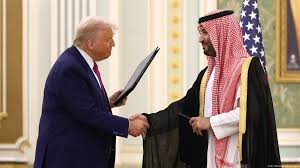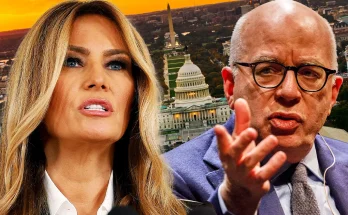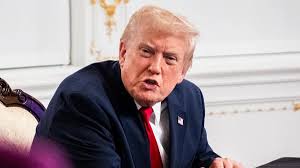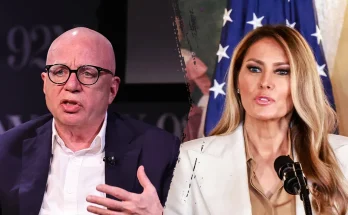When Donald Trump stepped off the plane in Riyadh, the sand shimmered like gold — and so did the symbolism.
Awaiting him at the foot of the stairs was none other than
Crown Prince Mohammed bin Salman (MBS) himself, smiling, hands outstretched.
It wasn’t just a diplomatic courtesy.
It was a statement.
Because two years earlier, when President Joe Biden made the same trip, he didn’t get a handshake. He didn’t even get a real welcome.
He got a fist bump.
And in the world of Middle Eastern diplomacy — where gestures speak louder than speeches — that difference said everything.
🛬 Biden’s Visit: A Cold Reception on the Red Sea Coast
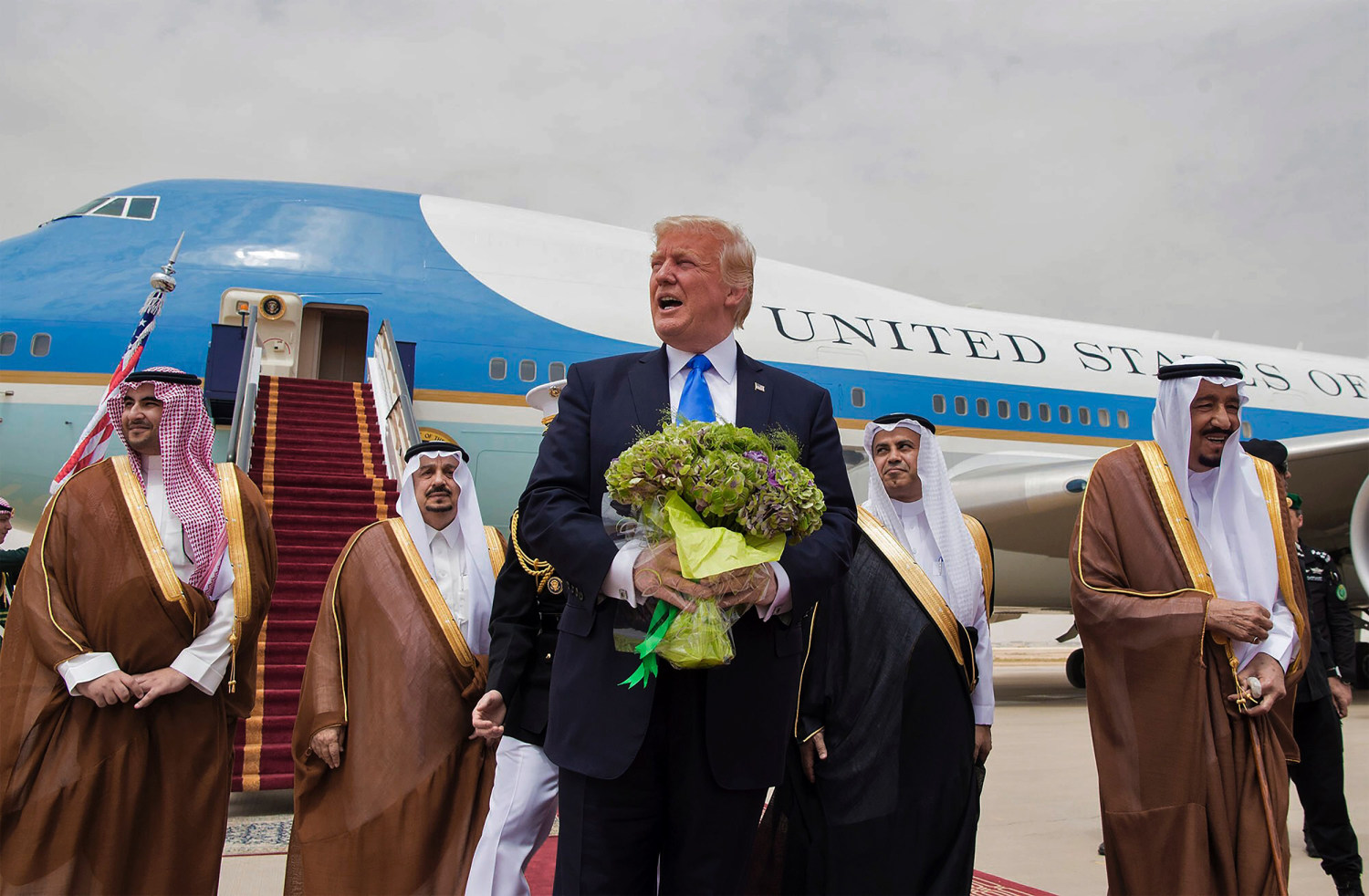
When Biden arrived in Saudi Arabia, his plane didn’t even land in Riyadh, the capital.
Instead, Air Force One touched down on the Red Sea coast, far from the royal palaces and ceremonial grandeur that usually greet a U.S. president.
There was no red carpet, no American flag, and no crown prince waiting to greet him.
Only a provincial governor — polite but distant — appeared for the formalities.
For a nation that values ritual and symbolism, it was a clear message:
You’re not exactly welcome here.
Later, when Biden finally met MBS in person, cameras captured the awkward moment:
Biden raised his fist for a casual bump. The crown prince followed — hesitant, expression unreadable.
That image went viral, becoming a meme that critics said perfectly summed up Biden’s foreign policy:
lukewarm, uncertain, and out of place.
🤝 Trump’s Return: The Red Carpet and the Royal Driver

Fast forward to Trump’s Middle East visit — and everything changed.
When Trump’s plane touched down,
the Saudi crown prince himself was waiting.
He extended his hand — and Trump, grinning broadly, grasped it firmly.
The handshake wasn’t just warm; it was cinematic.
Behind them, cameras flashed, a
red carpet unfurled, and Saudi honor guards lined the runway.
Then came the moment that stunned even veteran diplomats:
The crown prince personally drove Trump to his destination — something
no Saudi royal had ever done for a foreign leader.
At the evening ceremony, the YMCA choir performed, the crowd roared, and MBS once again appeared — this time to escort Trump back.
It wasn’t just a welcome. It was a coronation of respect.
💬 “That’s Not What They Wanted” — One Line That Broke the Internet

After the visit, reporters asked Trump about the difference between his reception and Biden’s.
Trump smirked and said just one sentence:
“That’s not what they wanted.”
Five words.
That’s all it took to make Biden’s fist bump look like a symbol of defeat — a handshake refused, a respect lost.
For millions watching online, it became the clip of the week.
Trump, once again, had turned a subtle diplomatic gesture into a viral masterclass in dominance.
🦅 Beyond Politics: The Power of Symbolism
In Saudi culture, gestures matter more than speeches.
A handshake is respect.
A drive in the royal car is honor.
A red carpet means friendship.
By those measures, Trump didn’t just visit Saudi Arabia — he
reclaimed America’s image of power there.
For many, the sight of him walking beside MBS — shoulder to shoulder, handshake to handshake — felt like a return to a more confident, commanding era of U.S. diplomacy.
Whether one admires him or not, it’s impossible to deny:
Trump understands theater.
And in global politics, theater is strategy.
🌍 A Tale of Two Presidents
Two visits. Two presidents. Two moments captured forever in photographs.
One shows a leader greeted with distance.
The other, with deference.
And between those two frames lies a message bigger than politics:
Respect in the world stage isn’t given — it’s projected.
Trump’s handshake wasn’t just a gesture of greeting.
It was a performance of power — and a reminder that in diplomacy, how you touch a hand can say more than any treaty ever will.
